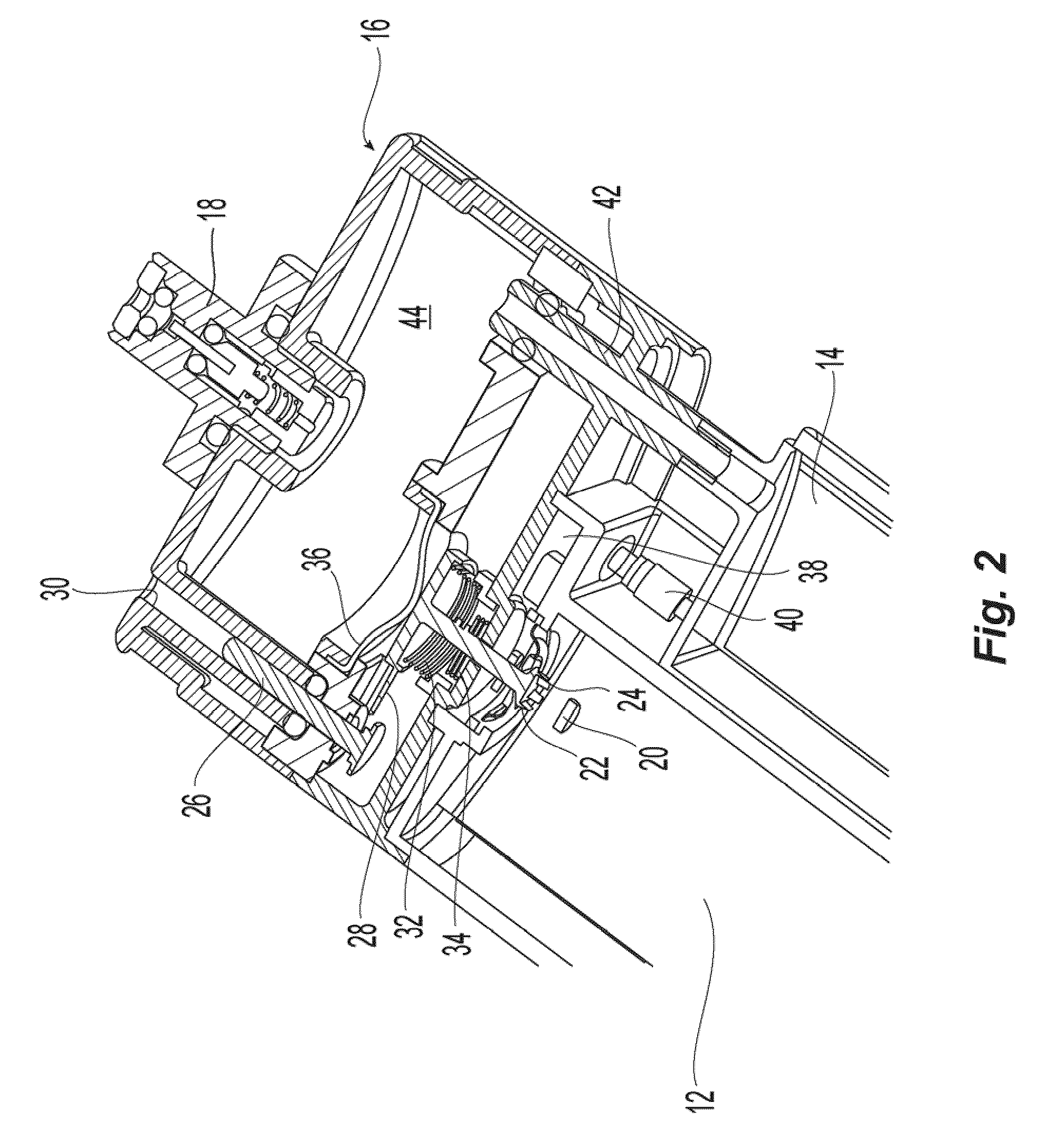Hydrogen Gas Generators
- Summary
- Abstract
- Description
- Claims
- Application Information
AI Technical Summary
Benefits of technology
Problems solved by technology
Method used
Image
Examples
Embodiment Construction
[0040]The general reaction between a metal hydride reactant and a liquid reactant to produce hydrogen is known. In one example, the reaction between sodium borohydride and water is as follows:
NaBH4+2H2O→(catalyst or heat)→4(H2)+(NaBO2)
[0041]Suitable catalysts include platinum, ruthenium and ruthenium salt (RuCl3), among other metals and salts thereof. Sodium borate (NaBO2) byproduct is also produced by the reaction. Sodium borohydride fuel as used in fuel cells is discussed in U.S. Pat. No. 3,459,510, which is incorporated herein by reference in its entirety.
[0042]As illustrated in the accompanying drawings and discussed in detail below, the present invention is directed to methods and devices capable of controlling and maximizing the release of hydrogen from chemical metal hydride fuels, such as sodium borohydride (NaBH4), and water. The present invention is also directed to self-regulating apparatuses that maximize the release of hydrogen fuels from a reaction of chemical metal hy...
PUM
 Login to View More
Login to View More Abstract
Description
Claims
Application Information
 Login to View More
Login to View More - R&D
- Intellectual Property
- Life Sciences
- Materials
- Tech Scout
- Unparalleled Data Quality
- Higher Quality Content
- 60% Fewer Hallucinations
Browse by: Latest US Patents, China's latest patents, Technical Efficacy Thesaurus, Application Domain, Technology Topic, Popular Technical Reports.
© 2025 PatSnap. All rights reserved.Legal|Privacy policy|Modern Slavery Act Transparency Statement|Sitemap|About US| Contact US: help@patsnap.com



